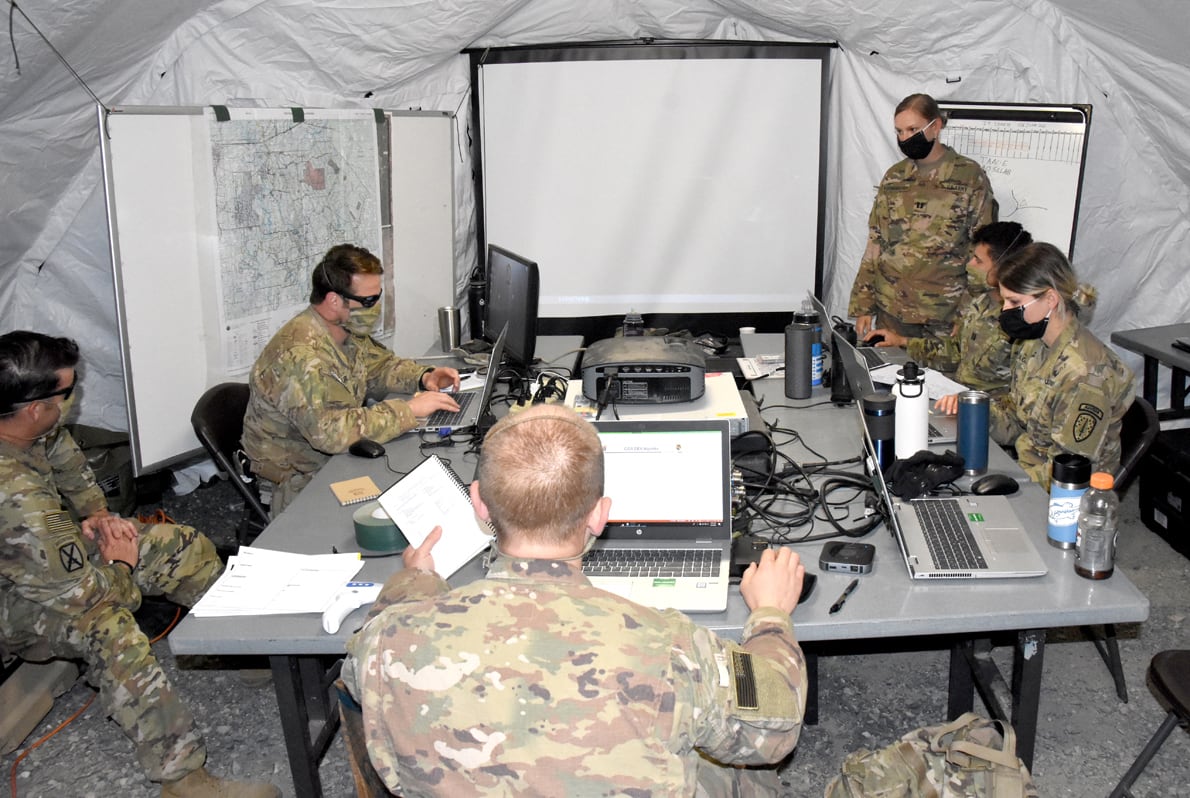The Army’s readiness model might get a shakeup in the near future, Forces Command boss Gen. Michael Garrett told Army Times.
When Garrett took over the command 18 months ago, every unit under his purview, he said, was on the path to the highest levels of readiness — an assessment of a units' manning levels, equipment serviceability and training.
Some of those units were trending upward in readiness even as they transitioned from being infantry brigades to ones designed around armored or Stryker vehicles, Garrett said during a Sept. 14 interview.
“Every one of those units was on a path to the highest levels of readiness. It was just a matter of how much time was it going to take him to get there,” Garrett added. But “that may not be the most efficient way to look at readiness. So we’re trying to be a little bit more precise in understanding the requirements.”
Those requirements are built around what each combatant command needs from the Army, such as Patriot missile batteries in U.S. Central Command. But the requirements also include the Army’s modernization priorities, like long-range precision fires, future vertical lift and new gear for soldiers.
“You have to be able to divest yourself of equipment, you’ve got to be able to receive new equipment, you have to complete training: There’s a timeline associated with all of that,” Garrett said. “The Army G-3/5/7 and Forces Command are looking at a new readiness model, something that helps us balance a little bit better our readiness or requirements in support of combatant commands, and requirements in support of modernization.”
RELATED

Garrett said he couldn’t delve further into the subject, but noted that more information will likely be available in the near future. However, he did say the Army is “very close to the same level of readiness this year as we’ve had in the past three years."
The big hiccup for the service this spring and summer was the global coronavirus pandemic, which temporarily halted combat training center rotations and forced units to stand down from training at home station.

“I want to say there were three or four CTC [combat training center] rotations that we had to cancel or postpone,” Garrett said. “The most challenging to make up have been [National] Guard CTC rotations because they don’t go all that often. ... But in terms of the active component’s participation, we were able to work our way through that.”
Garrett credited the National Training Center at Fort Irwin, California, and the Joint Readiness Training Center at Fort Polk, Louisiana, for creating bubbles around their training sites, as well as COVID-19 testing regimens and quarantine procedures to curb infections since restarting training.
Other elements of the force, particularly the National Guard, have been heavily relied upon this summer. Protests across the country over racial injustice saw the activation of more than 41,500 guardsmen by governors in 33 states and the District of Columbia.
RELATED

Garrett pointed to one unit in particular from the Minnesota National Guard that he said rose to the challenge this summer. In early June, Minnesota guardsmen were activated in the wake of protests over the killing of George Floyd in Minneapolis. The next month, the state’s 1st Armored Brigade, 34th Infantry Division was at the National Training Center in California to prepare for a 2021 deployment to the Middle East.
“It’s eye-watering, actually, when you think about everything that they did to ensure that they were able to maintain their NTC rotation,” Garrett said. One soldier’s “store was burned down, but he was still able to make it to this training rotation.”
Leaders from the National Guard Bureau, Army Forces Command and the Army Reserve have been discussing plans to make up some of the training that was missed over the busy spring and summer, Garrett added. And he remains optimistic about potential changes to the Army’s readiness model going forward.
“In a perfect world, what the Army would provide the Department of Defense is the exact amount of readiness that was needed on any given day to meet our global requirements, and then the rest of [the] Army resources would be put against cutting-edge modernization," he said.
Kyle Rempfer was an editor and reporter who has covered combat operations, criminal cases, foreign military assistance and training accidents. Before entering journalism, Kyle served in U.S. Air Force Special Tactics and deployed in 2014 to Paktika Province, Afghanistan, and Baghdad, Iraq.





